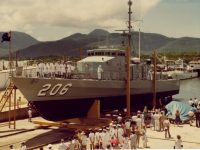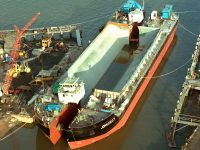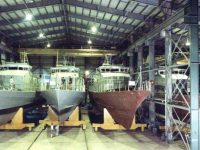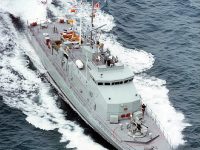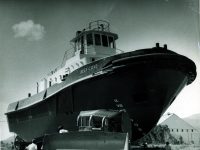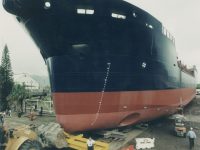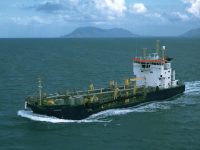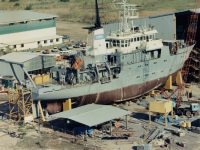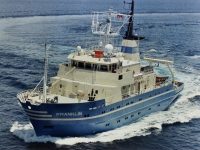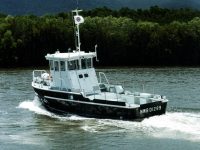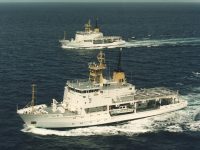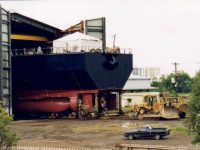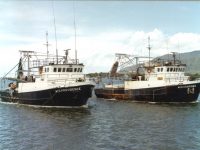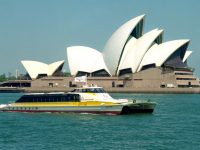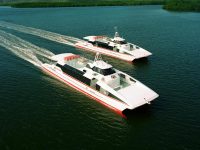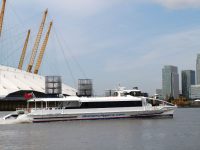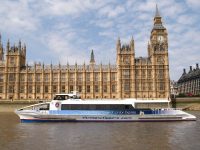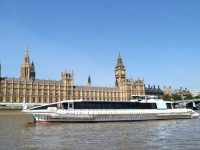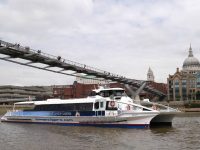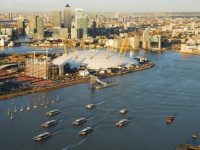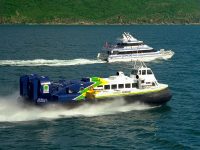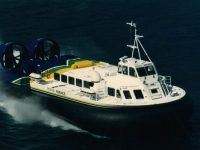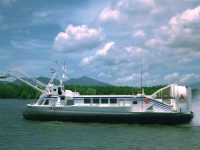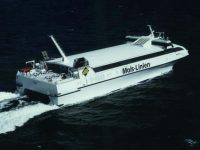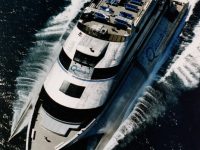Some projects include:
Development of Undercover Production Line and construction of 11 LCM8 landing craft for the Australian Army. The project required the development of aluminium welding and fabrication techniques for the wheelhouse structure and other sub-structures. This development, carried out in the period 1966-68 played a significant role in providing a foundation for the development of the Australian Fast Ferry Industry. A substantial part of the research was carried out jointly with Comalco subsidiary, Highgate Engineering in Brisbane.
Development of Undercover Production Line and the construction of 14 Fremantle Class Patrol craft for the RAN. Emphasis was placed on redesigning equipment to achieve a high ‘Australian manufactured’ content.
Winner of the Australian Defence Industry Inaugural Quality and Achievement Award 1984.
Paper – Construction of Patrol Craft presented to I.E. Aust. 1978.
Development of the CSIRO research vessel ‘Franklin’ – a joint development with the German company Schiffko and the Oceanographic Division of the CSIRO Hobart. Through this project, Don Fry acquired a minor shareholding in the company, Schiffko GmbH, located in Hamburg.
Paper – The Controls and Propulsion System for an Oceanographic Research Vessel.’ presented to I.E. Aust. 1983
Development of self-discharge vessels for handling silica sand at Cape Flattery Silica Mines.
Research and development of a large Semi-Swath Passenger/Vehicle Catamaran (Seajet). This has been Don Fry’s biggest commitment to research, having spent much of the time between 1990 and 1995 working on the project, including the conducting of extensive model testing at the research facilities of SSPA in Gothenberg, Sweden. Two Seajet gas turbine powered passenger/car ferries were designed by Don Fry and built in Denmark under licence by the company, Danyard.
Paper – ‘An Outline of Fast Passenger/Vehicle Ferries developed in North Queensland.’ presented to the International Ferry Operators Conference, Sydney 1995.
Recipient I.E. Aust Award of Excellence – Qld. Division 1997 (Products Category).
Development and design of two Hydrographic Survey Ships for the RAN. jointly with Schiffko GmbH and STN Atlas of Germany. Don Fry was extensively involved in the model testing programme and subsequent determining of the ships’ suitability for hydrographic work. He personally designed the retractable multi-beam transducer, motor- launch davits, bow thruster and high lift flap rudders.
Paper – ‘Rudder Profile Influence on Propulsive Efficiency’ – 1999.
Recipient I.E. Aust. Award of Excellence – Qld. Division 2000 (Products Category)
Development jointly with Krupp Fordentechnik Germany, of a 2900 cubic metre Dredge Brisbane for the Port of Brisbane Corporation with the objective of achieving ‘World’s Best’ dredging practice and maximising Australian content.
In 2001, this project won the I.E. Aust. Award of Excellence – Qld. Division (Products Category), RWH Hawken Award as the Overall Queensland Winner and I.E. Aust. National Award (Products Category). Also won NECA (Queensland) Award of Excellence.
- QCL John Oxley Split Hopper Barge and dredge ‘Amity’
- Launch Fremantle Class Patrol Boat Wollongong
- MV Aburri McArthur River Self Discharge Ship 1994
- MV John Oxley Split Hopper Barge 1990
- Fremantle Class Patrol Craft on trials
- Fremantle Class Patrol Boats under construction
- Fremantle Class Patrol Boat
- Fenwick Tug Reef Cove
- Dredge ‘Brisbane’ on Slipway 1999
- Dredge ‘Brisbane’ at sea 1999
- CSIRO ORV Franklin under construction 1984
- CSIRO ORV Franklin at sea
- Aluminium Workboat 22 built for Army and Navy
- RAN Hydrographic Survey Ships HMAS Melville & HMAS Leeuwin
- MV Weipa Launch
- Port of Brisbane Hopper Suction Dredge ‘Brisbane’ in workshop 1999
- Prawn Trawlers built for Medusa Investments
- QCL dredge Amity and split hopper barge MV John Oxley
- MV Straitsman on slipway 1971
- MV Straitsman being dragged to Slipway 1971
Development of low wash ferries
Low wash ferries (13 in total) were built by NQEA for Sydney Harbour, Tahiti, Holland, Nigeria and London plus 4 under licence to Damen Shipyard (Holland).
The “Hurricane Clipper” operates a regular commuter service on the Thames River. The vessel was funded for the first 18 months by NQEA to prove viability of the service. It is now owned and operated by Thames Clippers.
Development of Automatic Docking Systems – first unit fitted to the barge Oxley and dredge Amity operated by Queensland Cement Ltd in Brisbane. This design resulted in the client reducing staff requirements from twenty-three to four. A second Autodok system was fitted to the bulk carrier Aburri owned and operated by McArthur River Mining (a division of Mt. Isa Mines).
The Danish operators of the Seajet ferries adopted the automatic docking arrangement in 1996, achieving a world record turn-around time of eight minutes for 450 passengers and 120 vehicles.
- Low Wash Rivercat on Sydney Harbour 1992
- Bora Bora River Cats 1998
- Thames Clipper River Runner near The Dome, London
- Thames Clipper River Runner in front of Parliament House, London
- River Runner Hurricane Clipper on Thames River, London
- River Runner Sun Clipper on Thames River, London
- River Runners on Thames River
Other vessels constructed by Don Fry’s company NQEA
Tugs: Two 30 tonne bollard pull tugs for Fenwicks (Sydney), one 15 tonne bollard pull tug for Nabalco (Gove), one 45 tonne bollard pull tug for Sydney.
Prawn trawlers
Twenty-two work boats for the RAN and the Australian Army
Eight work boats for the PNG Government
Luxury passenger ferry Sun Eagle for Hayman Island
Numerous fast ferries for Queensland tourist operators including wave piercing catamarans for Quicksilver Connections.
Fast ferries and hovercraft
- Hovercraft and Taupo Cat at sea 1987
- Hoverfreighter operating on a Canadian River
- Hover Mirage Hovercraft on trial
- Hovercraft Manta with passenger docking boom Angola)
- Seajet 250 built by Danyard under licence
- Wave Piercing Catamaran Quicksilver VIII 1994
- MV Sun Eagle Hayman Island Vessel 1991
- MV Oceanic Princess 2003
Constructed and exported to Papua New Guinea, Japan, New Zealand, Kuwait, Yugoslavia, Singapore, Malaysia, Taiwan, Canada, England, Seychelles, Angola and Holland.
Various vessels for State Transit Authority, Sydney:
Three Jetcats – Circular Quay to Manly service on a daily basis.
Six Low Wash Ferries – Parramatta River to Circular Quay run
Ro/Ro vessel (70 metre) Straitsman – entered service in 1975 – operated between Melbourne and King Island.
Two vessels for Queensland Cement:
A 5000 tonne deadweight Split Hopper Powered Barge John Oxley, and
Dredge Amity which worked alongside the barge John Oxley.
Luxury yachts for Australian and USA clients
Ore carrier Aburri (3000 tonne deadweight) – fitted with a fully automatic filling and discharge system and Autodocking system.
Oceanic Princess – 63m luxury expedition cruise ship completed in 2005 for Coral Princess Cruises, Cairns
National Finalist – Engineers Australia – Engineering Excellence Awards
Recipient Engineers Australia (Qld Division) – Karel CAD Innovation Award
Recipient Engineers Australia (Qld Division) – Engineering Excellence Award (Products and Manufacturing Facilities category)
Development of Automatic Docking Systems – first unit fitted to the barge Oxley and dredge Amity operated by Queensland Cement Ltd in Brisbane. This design resulted in the client reducing staff requirements from twenty-three to four. A second Autodok system was fitted to the bulk carrier Aburri owned and operated by McArthur River Mining (a division of Mt. Isa Mines).
The Danish operators of the Seajet ferries adopted the automatic docking arrangement in 1996, achieving a world record turn-around time of eight minutes for 450 passengers and 120 vehicles.
Operation of a Naval and Commercial Ship Repair facility which handled approx. 300 services per year over a 30 year period.


